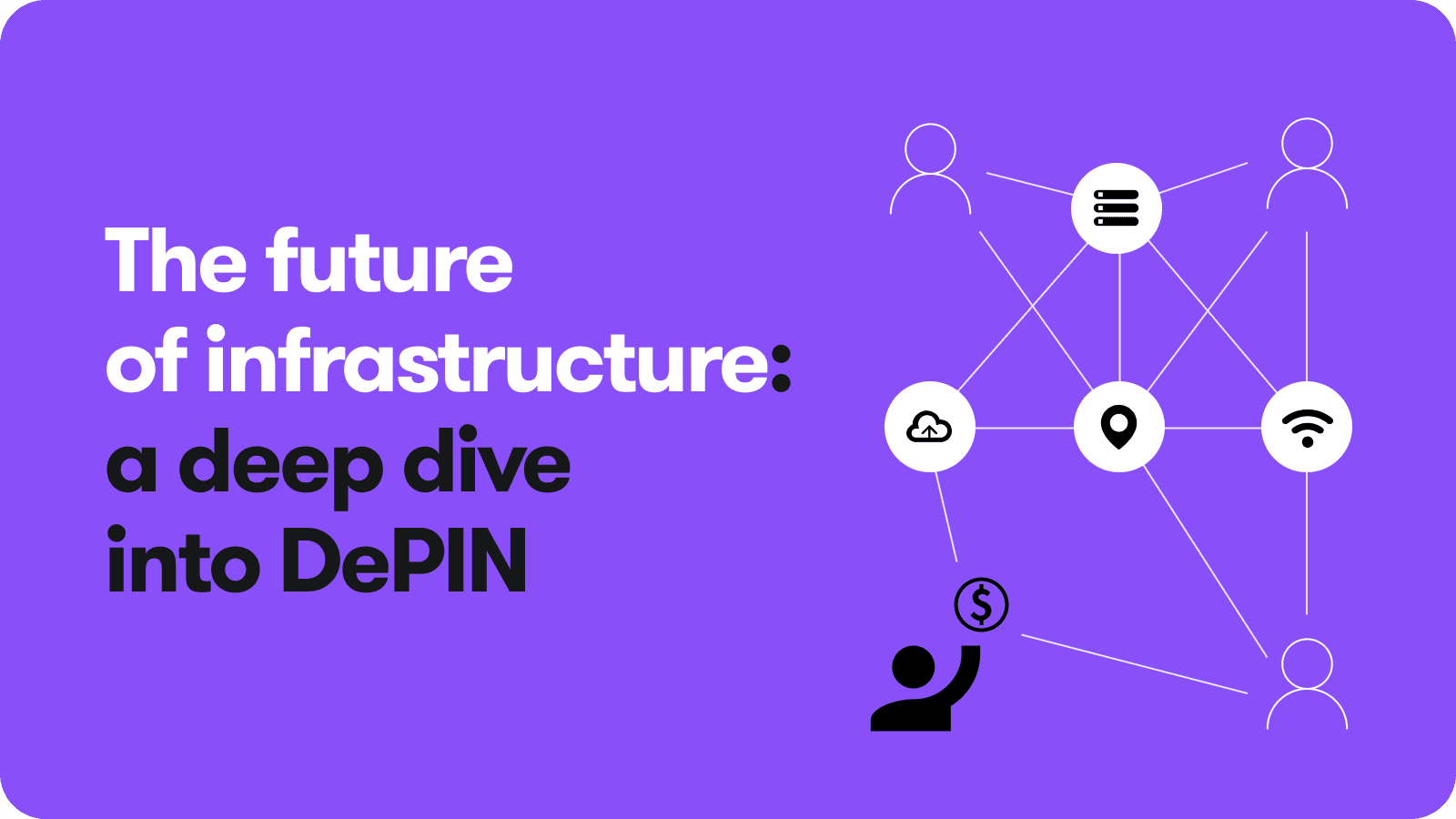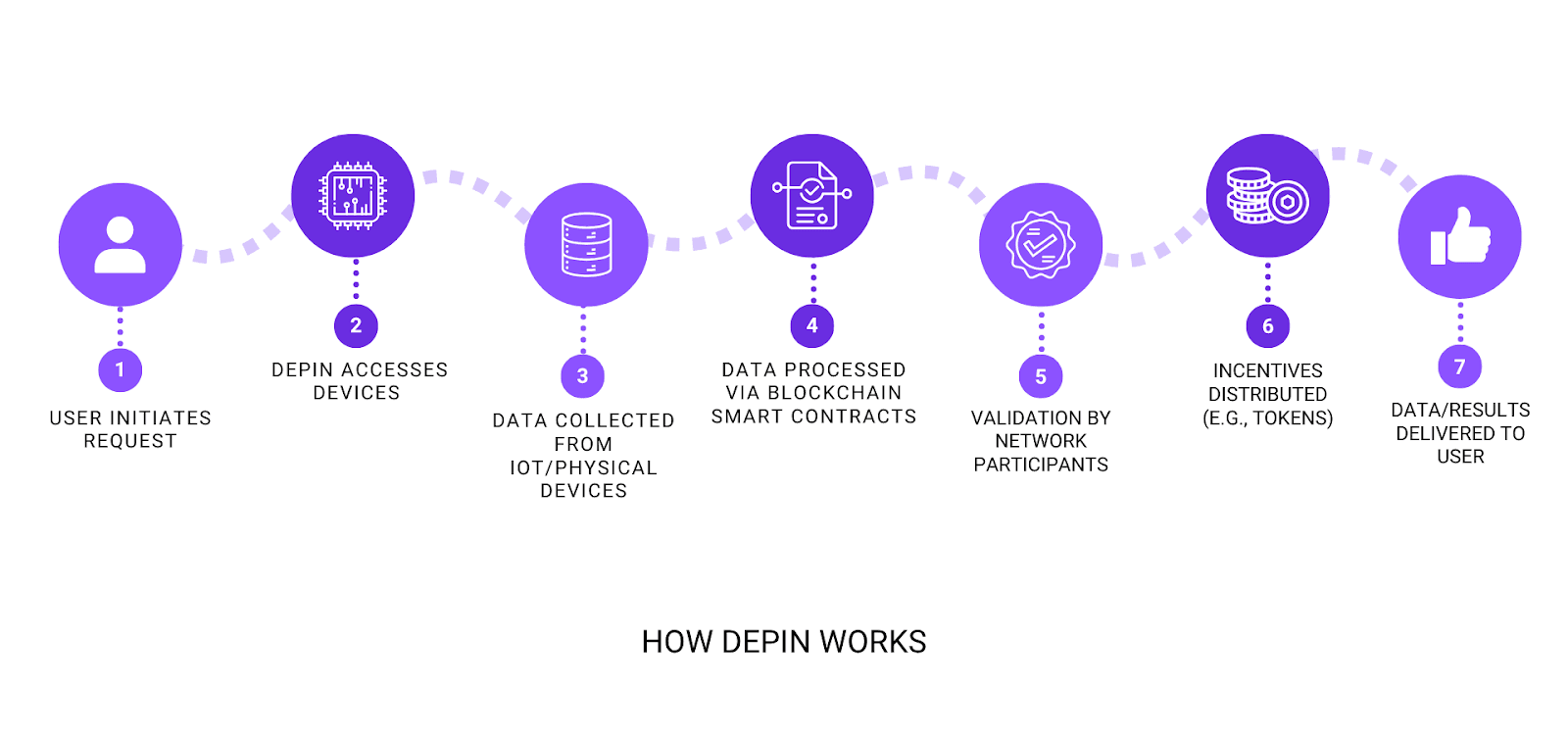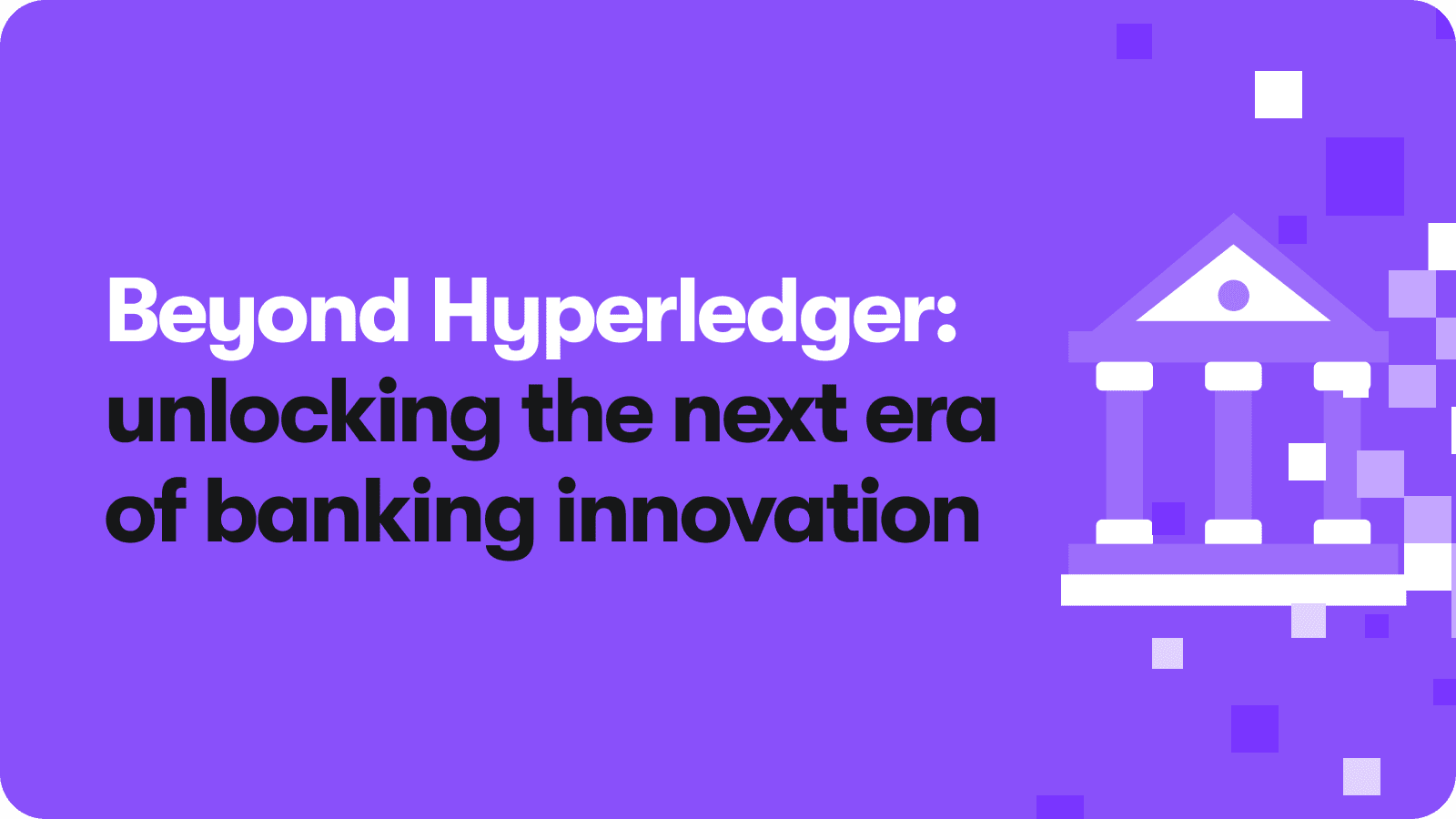
The Future of Infrastructure: A Deep Dive into DePIN
28 August 2025The Future of Infrastructure: A Deep Dive into DePIN
In today’s world, much of the physical infrastructure we rely on, such as wireless networks, data storage systems, and EV charging stations, is owned by centralized entities. These systems are often costly to build, slow to scale, and restricted by monopolistic control or gatekeeping. But what if individuals could crowdsource infrastructure, building and earning from the networks they help create?
This is where Decentralized Physical Infrastructure Networks (DePIN) come in. DePIN uses blockchain-based incentives to coordinate real-world hardware like routers, GPUs, storage drives, IoT sensors, and EV chargers through smart contracts. Anyone can participate in building and governing these networks, earning crypto rewards for contributing services. By unlocking unused resources in areas like computing, connectivity, and energy, DePIN creates open, resilient, and community-driven systems. According to a World Economic Forum report, this relatively new sector, currently valued at thirty to fifty billion dollars with over fifteen hundred active projects worldwide, is projected to grow to three and a half trillion dollars by 2028. It represents a shift from centralized control to a more equitable and participatory model where physical resources operate through decentralized protocols.
Problems with Traditional Infrastructure
High Costs and Central Ownership
Building physical infrastructure like cell towers, data centers, and power grids requires huge upfront investment, which only large corporations can typically afford. This centralization locks out individual participation and limits innovation.
Underutilized Resources
There is a massive amount of idle storage, compute power, and bandwidth sitting unused in personal devices around the world. Traditional models fail to tap into this distributed capacity, leading to inefficiency and resource waste.
Vulnerability to Outages and Censorship
Centralized systems are single points of failure. If one server or hub fails, or if access is restricted by a government or company, the whole network can go down or be censored.
Limited Access and Control
End users have no governance rights and limited visibility into how their data is stored, used, or monetized. Infrastructure decisions are made by centralized authorities, not the people contributing or relying on the system.
Slow and Costly Scaling
Expanding infrastructure (like adding more storage or bandwidth) is slow, expensive, and not feasible in underserved regions. This leads to poor access in remote or economically unprofitable areas.
How DePIN Solves These Challenges
Community-Driven, Low-Cost Deployment
DePIN lets individuals contribute hardware like routers, storage drives, or GPUs directly to a network. This bottom-up model eliminates the need for expensive centralized infrastructure and distributes ownership among users.
Efficient Use of Idle Devices
Instead of building new servers, DePIN taps into existing devices already owned by users. A phone, a router, or a dashcam becomes part of a functioning network, unlocking latent value from everyday tools.
Resilience Through Decentralization
With thousands of nodes spread across geographies, DePIN systems don’t go offline if one node fails. This decentralized architecture ensures uptime, increases redundancy, and reduces vulnerability to attacks or censorship.
On-Chain Transparency and Fair Rewards
Smart contracts and blockchain verification ensure contributors are fairly compensated based on real-time activity. Contributors can verify their earnings and participation on-chain, creating trust and accountability.
Organic and Inclusive Scaling
Anyone with compatible hardware can join without needing permission from a central provider. This makes DePIN especially effective in expanding into underserved areas, as coverage grows based on real-world demand, not corporate ROI.
How DePIN Works

DePIN’s true potential lies in how its core components come together to create a decentralized, efficient, and community-driven infrastructure network.
1. User Initiates Request
The user (individual or application) initiates an interaction with a DePIN-powered service, such as requesting data from environmental sensors, querying edge computing nodes, or accessing decentralized storage.
2. DePIN Accesses Devices
The decentralized physical infrastructure network (DePIN) locates and connects to relevant physical devices deployed by participants, these could be IoT sensors, routers, storage units, EV chargers, etc.
3. Data Collected from IoT/Physical Devices
The connected devices gather real-time data (e.g., temperature, traffic, air quality, device uptime) and send it to the network. This data forms the raw input for decentralized processing.
4. Data Processed via Blockchain Smart Contracts
Smart contracts running on a blockchain receive the data and execute logic, such as filtering, aggregation, or applying business rules. This ensures the process is transparent, automated, and tamper-proof.
5. Validation by Network Participants
Independent participants verify the authenticity, accuracy, and reliability of the data. This ensures that malicious or faulty inputs are filtered out and that consensus is achieved.
6. Incentives Distributed (e.g., Tokens)
Once the data is verified and used, contributors (device owners, validators, data providers) are rewarded with tokens or other forms of incentives for their participation and resource sharing.
7. Data/Results Delivered to User
The final validated data or actionable results are sent back to the requesting user in a usable format via a dashboard, API, or decentralized application (dApp).
Key Benefits of DePIN
Fair Incentivization
DePIN networks fairly reward participants by distributing tokens proportional to the resources they contribute, whether it's bandwidth, storage, compute power, or real-world data. Unlike centralized systems where value distribution is often opaque, DePIN enables anyone to earn from devices they already own, making crypto rewards more accessible and merit-based.
Global Accessibility
Anyone with a compatible device such as a hotspot, sensor, dashcam, or even a browser can join a DePIN network without corporate or governmental permission. This permissionless design allows infrastructure to grow organically, especially in underserved or remote regions where traditional systems fall short.
Transparent & Programmable Infrastructure
DePIN networks are powered by smart contracts, which enable automated pricing, payments, and governance. These interactions are recorded on-chain, ensuring transparency, minimizing fraud, and eliminating reliance on intermediaries. Participants can trust the system because they can independently verify every transaction and rule being followed.
Cost Efficiency
By leveraging idle hardware that people already own, like spare disk space, underused CPUs, or local connectivity, DePIN networks avoid the massive capital expenditure needed to build centralized infrastructure from scratch. This democratized approach makes infrastructure deployment far more scalable and sustainable.
Reliability
DePIN’s distributed architecture makes the network inherently resilient. With nodes deployed globally across countless independent contributors, there's no central point of failure. If one device or region goes offline, the rest of the network keeps functioning seamlessly. This widespread redundancy is key to building systems that are robust, fault-tolerant, and always available.
Use Cases of DePIN
Computation
DePIN networks are transforming how computing resources are accessed by tapping into underused GPUs and CPUs from everyday users. Instead of relying on centralized data centers, these networks allow individuals to contribute idle processing power from personal devices. This is useful for tasks that need intensive computation, such as AI training, 3D rendering, robotics, or gaming. Participants earn rewards based on their contributions, while developers and creators gain affordable, on-demand access to computing power without building costly infrastructure.
Example: Render Network is a decentralized platform where artists submit rendering tasks, and users with idle GPUs process them in exchange for tokens.
Storage
DePIN storage networks offer a decentralized alternative to traditional cloud storage. Instead of relying on a single provider, they are powered by individuals around the world who contribute unused storage space from their personal devices. Anyone with spare capacity on their computer or external drive can install a lightweight client to connect to the network. Their device securely stores encrypted fragments of other users' data, and in return, they earn token rewards. The more storage they provide and the more reliably their device stays online, the more they can earn. It transforms storage into a shared, community-driven resource, resilient, transparent, and accessible to all.
Example: Platforms like Filecoin are decentralized storage networks where users pay to store data, and providers earn tokens for offering space and keeping data available.
Connectivity
In many parts of the world, internet access is limited by the slow rollout and high costs of centralized telecom infrastructure. Instead of relying on large corporations to build expensive cell towers, DePIN networks empower individuals to extend wireless coverage using compact devices from their homes or offices. These networks operate on a peer-to-peer model, where users install low-power wireless hotspots that connect nearby devices. The more reliable and widely used a hotspot is, the more its owner is rewarded with tokens. This bottom-up approach creates a flexible and scalable network that grows wherever there is demand, especially valuable in rural or underserved areas where traditional telecom services are slow to reach or too costly to maintain.
Example: Helium provides decentralized IoT and 5G coverage by rewarding users who run wireless hotspots, helping expand network access in underserved areas.
Sensors
Sensor-based DePIN networks are designed to gather valuable real-world data directly from user-owned devices such as dashcams, GPS modules, smart vehicles, and health wearables. DePIN allows individuals to contribute data voluntarily and get rewarded for it. These networks crowdsource sensor data to build decentralized alternatives to services traditionally managed by private companies.
The data collected can serve a wide range of purposes - improving navigation, monitoring vehicle performance, analyzing traffic patterns, or even tracking environmental changes. Since contributors maintain control over the data they share, this model promotes greater privacy and transparency while ensuring that those who power the network are compensated fairly.
Example: Hivemapper allows drivers to map roads by using dashcams. The visual data collected is used to create an up-to-date, decentralized map. It serves as a community-driven alternative to centralized mapping platforms like Google Maps.
DIMO enables car owners to share diagnostics, performance stats, and GPS data from their vehicles.
Data Marketplaces
In data marketplaces, DePIN networks create systems where users can share useful data such as web activity, location history, or app usage in structured and anonymized formats. This data is then made available to buyers like AI companies, researchers, or developers who need large, real-world datasets for training models or analytics. Instead of being collected passively by centralized platforms, the data is contributed actively and intentionally by users through specific tools or apps.
Example: Grass collects public web data for AI by letting users share idle bandwidth or resources through a browser extension or app. Users are rewarded with tokens.
Energy grid
In decentralized energy grids, DePIN networks allow individuals with renewable energy sources like solar panels or home batteries to feed excess electricity into a shared network. Using smart meters and blockchain-based protocols, the system records how much energy is generated and consumed. Participants can sell unused power directly to others nearby, creating a peer-to-peer energy market. Payments and energy tracking are handled automatically via smart contracts, enabling real-time settlement without going through traditional utility companies.
Example: Powerledger (or similar DePIN models) allows individuals to sell excess solar energy directly to neighbors, creating a decentralized, token-incentivized energy network.
Gateway.fm: Supporting DePIN Infrastructure
Building a DePIN (Decentralized Physical Infrastructure Network) without a robust infrastructure stack often forces teams to stitch together multiple services, managing RPC endpoints, setting up indexers, ensuring data availability, and handling protocol updates, all while trying to scale their physical network. This fragmentation not only slows down development but also diverts focus away from the core goal: deploying real-world infrastructure and growing the user base.
We solve this by offering an all-in-one Web3 platform tailored to the needs of DePIN builders. From chain deployment and RPC services to indexers, oracles, account abstraction, blueprints, and more, we handle the heavy lifting so teams can stay focused on their product. Our infrastructure is optimized for performance and scalable by design, eliminating the need to build or manage backend systems independently. With us, DePIN teams can move faster, reduce operational complexity, and confidently scale from concept to adoption.
Final Thoughts
DePIN offers a powerful shift in how physical infrastructure is created and maintained, replacing centralized control with open, community-driven participation. By allowing individuals to contribute resources like computing power, storage, connectivity, and real-world data, DePIN unlocks new opportunities for earning, collaboration, and innovation. As more people and devices join these networks, DePIN has the potential to build infrastructure that is more scalable, resilient, and inclusive than traditional models. This marks a significant step toward a decentralized future where physical systems are governed and sustained by the communities that rely on them.
Other blog posts
Want to read more? Discover our other articles below!



